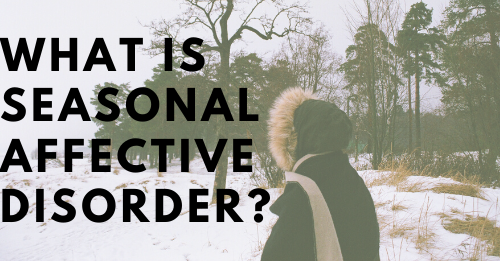Seasonal affective disorder, or SAD, is a mood disorder related to changes in seasons. Most individuals with SAD experience depressive symptoms that start in the fall and continue into the winter months. In some cases, seasonal affective disorder can also cause depression in spring or early summer. Treatment options for individuals with SAD can include light therapy, psychotherapy and/or medications.
Symptoms of SAD
For those whose seasonal affective disorder kicks in during the fall and continues into the winter, symptoms usually appear during this time and subside once spring and summer months come along. Symptoms may become more severe as the winter progresses and include:
- Loss of interest in activities once enjoyed
- Feelings of hopelessness, guilt or worthlessness
- Problems falling or staying asleep
- Difficulty concentrating
- Sluggishness
- Depression throughout the day, nearly every day
- Excessive agitation
- Low energy
- A heavy feeling in the arms or legs
- Heightened rejection sensitivity and interpersonal difficulties
- Increased appetite and cravings for carbohydrates
- Frequent suicidal thoughts
Although not as common, seasonal affective disorder can strike during spring and summer months as well. Symptoms of summer-onset SAD are:
- Weight loss
- Changes in appetite
- Insomnia
- Anxiety
Causes of Seasonal Affective Disorder
Every individual case of SAD is different, and the specific cause remains unknown. Factors that have been shown to come into play are:
- Serotonin levels: Reduced sunlight can cause serotonin levels to drop and trigger depressive feelings. Serotonin is a brain chemical that affects mood and plays a major role in winter-onset SAD.
- Melatonin levels: Melatonin is a hormone produced by the pineal gland that causes sleepiness as a result of decreased sunlight. Melatonin production increases in winter months and can cause those suffering from seasonal affective disorder to become sleepy and sluggish. Increased melatonin, combined with reduced serotonin, can throw circadian rhythms off balance.
- The biological clock: Limited amounts of sunlight in winter months may induce feelings of depression by disrupting your body’s internal clock.
Seasonal affective disorder is more common in women than men and occurs more frequently in younger adults than older adults. Other risk factors that may increase an individual’s risk of SAD are a family history of depression, co-occurring conditions like bipolar disorder or depression and living far from the equator.
To be diagnosed with SAD, a person must first meet the criteria for a major depressive episode coinciding with specific seasons for at least two years.
Get Professional Help at 7 Summit Pathways
If you feel hopeless or have turned to a substance to find relief from seasonal affective disorder, know that you’re not alone. Don’t write that recurring seasonal feeling off as merely a case of the “winter blues” that you have to endure on your own. 7 Summit Pathways is here for you and will help you with an individualized treatment approach to target your personal needs.
Feel free to reach out to us or schedule an appointment today to learn more about our holistic treatments that work.

